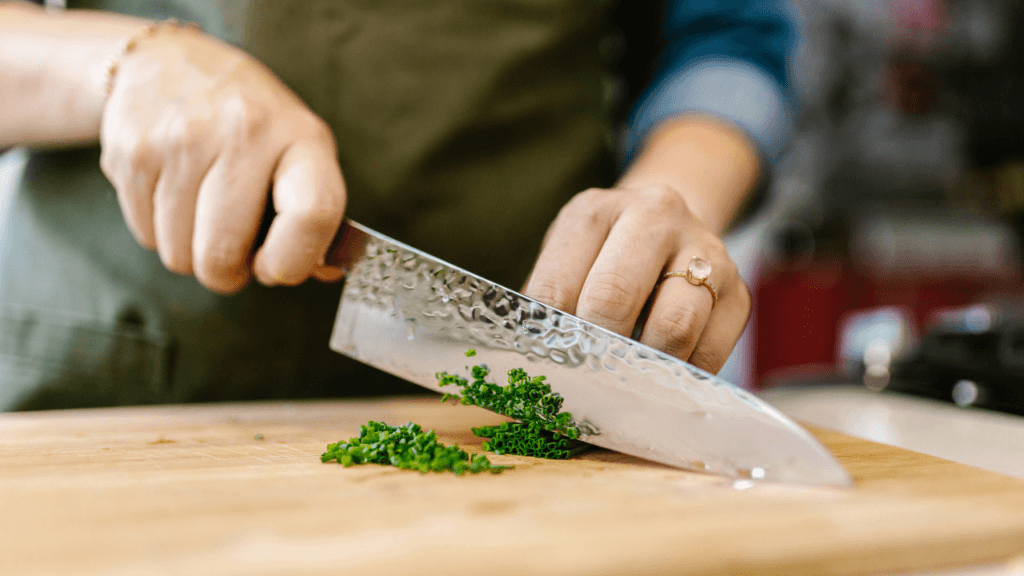There’s something undeniably satisfying about crafting the perfect omelette – the fluffy texture, the golden-brown exterior, and the endless possibilities for fillings.
However, for many home cooks, the journey to omelette perfection is plagued by a common obstacle: sticking to the pan. But fear not!
In this comprehensive guide, we’ll unravel the mysteries behind why omelettes stick and provide you with practical tips to ensure your morning masterpiece slides out effortlessly every time.

Contents
Understanding the Issue:
Picture this: reminiscing on childhood mornings filled with the aroma of freshly made omelettes, only to encounter frustration when attempting to recreate them as an adult.
Sound familiar? Many of us have experienced the disappointment of a perfectly good omelette tearing apart in the pan. But fear not, for the solution lies in understanding the science behind non-stick cooking.
Exploring the Science:
The culprit behind sticking omelettes often boils down to a few key factors. First and foremost, the temperature of your pan plays a crucial role. If the pan is too hot, the eggs will cook too quickly, leading to sticking. Conversely, if the pan is not hot enough, the eggs may spread thinly and fail to form a cohesive omelette.
Another critical factor is the balance of oil or butter in the pan. While too little oil can result in sticking, excessive oil can lead to a greasy omelette. Finding the perfect equilibrium is key to achieving that coveted non-stick surface.
Additionally, the type of pan you use can impact the outcome. Non-stick pans are ideal for omelette-making due to their smooth surfaces, but with proper technique, traditional pans can also yield excellent results.
Tips for Success:
- Use Nonstick Cookware: Invest in a quality non-stick pan to minimize the risk of sticking. Ensure the pan is well-maintained to preserve its non-stick properties.
- Avoid Overcrowding: Give your omelette room to breathe by avoiding overcrowding the pan. If making multiple servings, opt for smaller omelettes or cook them separately.
- Balance Butter and Oil: Achieve the perfect balance of butter or oil to create a non-stick surface without overpowering the flavor of the eggs.
- Control the Heat: Find the sweet spot when it comes to pan temperature – too high, and your eggs will stick; too low, and they may not cook evenly.
- Employ a Rubber Spatula: Use a rubber spatula to gently lift and flip your omelette, ensuring it releases easily from the pan.
FAQs for Omelette Mastery:
How do you keep an omelette from sticking to the pan?
To prevent your omelette from sticking to the pan, start by ensuring your pan is well-heated before adding any ingredients. Use a non-stick pan or properly seasoned skillet, and be mindful of not overcrowding the cooking surface. Additionally, using a sufficient amount of oil or butter can help create a non-stick barrier between the eggs and the pan.
What is the ideal cooking temperature for omelettes?
The ideal cooking temperature for omelettes is medium-low heat. Cooking at too high of a temperature can cause the eggs to cook too quickly and stick to the pan, while cooking at too low of a temperature can result in uneven cooking and a rubbery texture.
How do you prevent sticking in stainless steel pans?
When using stainless steel pans, it’s crucial to properly preheat the pan and use enough oil or butter to create a non-stick surface. Additionally, using a spatula to gently lift and loosen the edges of the omelette as it cooks can help prevent sticking.
How long should you cook an omelette before flipping?
The cooking time for an omelette before flipping can vary depending on factors such as pan temperature and desired doneness. Generally, it’s recommended to cook the omelette for 2-3 minutes on medium-low heat before flipping. However, keep an eye on the edges of the omelette and adjust the cooking time as needed.
What is the best pan for cooking omelettes?
The best pan for cooking omelettes is one that has a non-stick surface and is the right size for the number of eggs being used. Non-stick pans are ideal for omelette-making due to their smooth surfaces, but well-seasoned cast iron or stainless steel pans can also yield excellent results with proper technique. Additionally, choose a pan with sloped sides to make flipping the omelette easier.
With the insights gained from this guide, you’ll be well-equipped to tackle the challenge of sticky omelettes head-on. Armed with an understanding of the science behind sticking, along with practical tips and FAQs for success, you’ll soon be flipping flawless omelettes like a seasoned pro. So bid farewell to sticky situations and hello to breakfast perfection – your omelette awaits!
With this guide in hand, you’ll never wonder why your omelette sticks to the pan again. Happy cooking!



